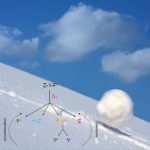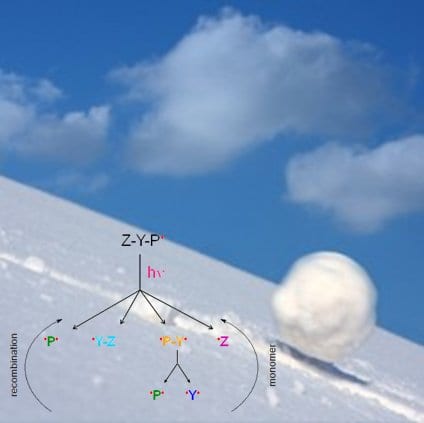Radical emulsion polymerization is used industrially to produce a wide variety of environmentally friendly polymers. Consequently, its mechanism  is well understood. Typically, reactions begin with free radical generation, and in many cases result in polymer particles that are less than 100 nm in diameter, and contain either one or no growing radical.
is well understood. Typically, reactions begin with free radical generation, and in many cases result in polymer particles that are less than 100 nm in diameter, and contain either one or no growing radical.
Klaus Tauer (Max Planck Institute for Colloids and Interfaces, Golm, Germany) and coworkers now describe a unique photo-initiated emulsion polymerization accelerated by snowballing radical generation in a continuous flow reactor.
In contrast to classical emulsion polymerization, these unprecedented snowballing reactions are rapid and high-yielding, with each particle simultaneously containing more than five radicals ‑ a consequence of phosphine oxide photoinitiator incorporation into the nascent polymer backbone and repeated radical generation upon photo-irradiation.
This dramatically boosts the radical polymerization rate and generates long polymer chains with ultrahigh molecular weights. Initiator incorporation also allows reactions to be restarted after “termination”. Thus, by tailoring monomer addition during sequential rounds of irradiation and polymerization, snowballing radical emulsion polymerization could produce novel and, nearly monodisperse polymer particles while minimizing energy consumption.
Snowballing radical polymerization can be exploited to design and create polymers and particles with previously inaccessible properties.

















